Engaging With Diversity – Giving Pupils a Voice
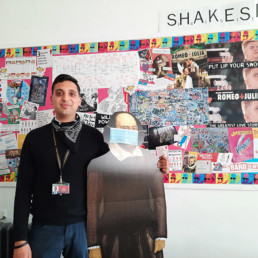
Written by Gaurav Dubay
Head of English at King Edwards VI Handsworth Grammar School for Boys and Evidence Lead in Education.
The need to diversify
In 2010, the then Education Secretary, Michael Gove, announced a number of sweeping educational reforms – particularly in English – where the likes of Byron, Keats and Dickens would firmly be re-rooted and restored to their original veneration within the English educational system. The changes were designed to bring rigour and improve students’ grasp of English Language and Literature. Whilst I firmly welcomed the ambitions, I feared that the texts I loved – ‘To Kill a Mockingbird’, ‘All My Sons’ and ‘Shards of Memory’ – would be relegated to the lower leagues of what I like to call The Reading League, and thus deny countless students access to texts that they could both learn from and relate to.
Since that time, my suspicions have been confirmed by countless reports, and, most recently, The National Literacy Trust concluded that the majority of ethnic minority students do not ‘see themselves in what they read’ (Best et al, 2020). The findings of reports like the one aforementioned, as well as our own internal evidence, meant that we – in a multi-ethnic school – needed to work on developing curriculum diversity. The words of Fletcher (2005) resonated with us where the assertion is made that learners’ voice creates ‘empathetic learning environments that value diversity and multiple perspectives.’ We made the choice, therefore, to put our students at the forefront of the discussion on curriculum diversity.
What did our pupil voice dialogue look like?
MHS (Mentally Healthy Schools) argues pupil voice is an effective mechanism through which we ‘can create meaningful change…better academic outcomes’ and perhaps most importantly facilitates ‘a sense of empowerment and inclusion’. There is a wealth of information we can refer to in order to successfully implement pupil voice. However, we strongly felt that we needed our students to feel a sense of ‘empowerment’ through the process. We, therefore, framed our discussion using the following format:
- Explored, discussed and defined the meaning of diversity.
- Explored what worked well in our curriculum.
- Explored what didn’t work well.
- Develop pragmatic solutions.
Finally, in order to value all voices, students were chosen to contribute through randomised selection.
The outcomes of the discussion:
- Defining diversity – It was clear from the onset that our students believed that the celebration of our unique identities – race, religion and gender – was to feature as part of our definition. However, there was a growing sense, through the process, that uniqueness and equality could not be separated; each unique experience needed to be equally understood and equally valued. To that end, our students phrased our department’s diversity vision as ‘An acceptance, recognition and celebration of our unique identities. Each unique experience – regardless of race, religion, sexuality and the like – are to be celebrated. No voice will be silenced and all voices will be respected.’ Perhaps the most enlightening experience was the unanimous feeling that the word ‘tolerance’ was not to feature as part of the definition.
- WWW – Students strongly agreed that the curriculum, particularly at Key Stage 3, exposed them to diverse voices. One student felt he would have ‘been none the wiser about the tensions traditional African women face had it not have been for The No1 Ladies’ Detective Agency’. Others appreciated the opportunity to discuss topical issues with regards to race through their study of transactional writing in year 11 and ‘Othello’ in Sixth Form.
- HTD – The discussion did, however, expose flaws that need addressing. Whilst the success of English learning lies in the variegating offerings of texts and genres studied, it was strongly felt that the discussion needed to extend beyond the English curriculum and many confirmed the findings of Johnson (2010) who felt that diversity broadens beyond the school curriculum and needs to be part of a school’s ethos. Our pupils also felt more needed to be done to ‘educate’ – not ‘punish’ – those who ‘might get it wrong’.
- Feeding in to our DDP – The findings of our discussion have since been implemented in to our DDP (see https://www.handsworth.bham.sch.uk/curriculum/subjects/english/). It will be our students, however, who will be tasked with evaluating our effectiveness and they, too, will play an important role in successfully building a diverse curriculum that regularly seeks to explore the voices of those who are often marginalised.
- Wider school – following the findings, students will discuss their findings further with the School Council.
What we learnt:
Time! This is perhaps the most important lesson we learnt as a leadership team. Discussions about diversity cannot simply be timetabled and forgotten about. We needed to extend our discussion not once, not twice, but three times (and if we could have discussed more, we would)! There was a lot that needed to be said, digested and explored.
Personally, however, I felt that our students would not come up with solutions that were pragmatic. I was well and truly proven wrong! Solutions were not only pragmatic, but insightful, empathetic and empowering. TP Due argues, ‘Diversity should just be called reality. Your books, your TV shows, your movies, your articles, your curricula need to reflect reality.’ We are not there yet – but we are on a journey to get there.
For further information, please follow us @english_hgs
Personal Twitter handle: @GauravDubay3
Bibliography:
- Best, Clark and Picton, I. (2020). ‘Seeing Yourself in What you Read: Diversity and Children and Young People’s Reading in 2020’. NLT – UK.
- Fletcher, A (2005). Meaningful Student Involvement: Guide to students as partners in school change. Soundout www.soundout.org/MSIGuide.pdf
- Johnson, LS (2010). ‘The Diversity Imperative: Building a culturally responsive school ethos’. Intercultural Education. 14. p 17 – 30.
- Mentally Healthy Schools: https://www.mentallyhealthyschools.org.uk/
Think Equal – Equality Education in Action

Written by Ben Mearhart
M.Ed. in Educational Leadership and in his 10 years as a senior leader developed practices and curricula which progressed teaching, learning, outcomes and personal development to ‘Outstanding’ levels.
Intent
As a joint-Headteacher of a forward-thinking primary school I was always on the look-out for initiatives which spoke to the heart of what I most value – the children’s actual experience and equipping them for leading rewarding lives. Think Equal’s social and emotional literacy programme achieves this and so much more.
I can’t think of anyone I know who wouldn’t benefit from enhanced social and emotional literacy. From engaging the compassion that it can grow, for ourselves and everyone around us. What do you do when you feel completely lost? When you feel you’ve made a terrible mistake? How do you support yourself or others when they feel this way? How do you treat people as they would like to be treated?
This, to my mind, is the true work of a curriculum, of a school; namely to cultivate an authentic social and emotional literacy which is steeled with a depth and breadth of real world understanding that together can make the world we leave for our children better than the one we inherited.
Implementation
You may of course learn such things through trial and error. Or, to be more certain of success, you can embrace social and emotional literacy as a golden thread of your learning and understanding as a student, of your pedagogy and support as a teacher and of your vision and impact as a leader. The mission, content and execution of Think Equal’s programme achieves this too. Bold claims I know, but treat those seeds of doubt to a quick glance at Think Equal’s Committee of Advisors and Academic Partners to see how this might be possible.
From Understanding the World to Personal, Social and Emotional Development – and all the fertile vertical and horizontal links between and beyond – Think Equal’s programme can instantly enhance your curriculum, pastoral care and ultimately the love and cohesion that unites your school community. And at a time when children’s minds – at their most plastic – can be so ripe to engage with what so many adults, myself included, can find paralysingly-awkward and difficult to negotiate in reality. What is true fairness? How are we different and how are we similar? How do I show you that I genuinely appreciate you as a human being? The programme largely enables these developments through consistently engaging and inspiring stories and activities.
Diverse narratives:
At age- and stage-appropriate levels, the children explore and embrace vital concepts like equality, emotion and race within the comparative safety of the experiences and choices of a beautiful range of characters.
Emotional intelligence in action:
Their discoveries are then reinforced with the help of the programme’s carefully scaffolded and inclusive activities so that they are ready to respond when reality calls.
Impact
And oh the difference! At its most essential, we found that our planning for Personal, Social and Emotional Development for the year was pretty much covered. Done.
More importantly…within weeks we saw elevated levels of kindness and consideration. We saw children often reserved and tentative now emboldened and asserting their values. We saw children who knew themselves and their friends with deeper understanding and confidence, who had normalised the range of emotions we experience but not the negative actions they can drive.
Children who, self-confident and upright, were happier, more engaged, independent and much more likely to approach conflict with courage and solutions(!). The positivity rippled through our staff and to home too. These days there is rightly much talk of a mental health and well-being crisis (pre- and post-Covid 19). In times of joy, sorrow and everything in between I don’t think we can expect more than to ride those waves to the best of our ability. Pursuing the Think Equal programme enhances that ability and not as a reactive solution – a bolt on – but as a pro-active and living, breathing and growing reality.
Using Students Voice to understand Diversity
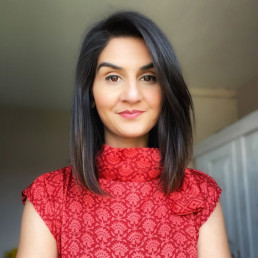
Written by Roma Dhameja
Secondary Vice Principal responsible for Teaching and Learning with a particular passion for Student Voice and teaching students Business, Economics and about Money.
Google ‘What is Diversity’ and you will see it defined as the ‘process of involving people from a range of different social, ethnic, gender, sexuality backgrounds.’ However, the way we often portray it is through a lens of polarisation. White or non-white. Male or Female. We know life is more complex than that. I, as a woman in her 30s of Indian heritage, cannot speak for every woman with that background and in that age bracket. Our experiences vary. It also doesn’t mean I have nothing in common with a middle-aged white man.
This doesn’t mean that we shouldn’t endeavour to ensure diversity in our board rooms/staff body. It means we have to pay closer attention to experiences rather than the way we classify ourselves, and that’s why I want to focus on the element of ‘involving people’ in the above definition. Because unless the communication channels are open, our understanding of unique experiences and similarities will remain stunted.
With this in mind, I have loved conducting student voice activities throughout my teaching career. Our students’ backgrounds affect the way they engage with education. I know this, I have experienced this. At age 4, I joined the British education system with English as my third language and not entirely fluent in it either. Rather than celebrate my trilingual abilities, I was always innately aware that having not mastered English first I was seen to have a disadvantage. This became more apparent as I studied English Literature at A Level and whilst my peers could reference Greek Gods I had a wide variety of Hindu God’s I could refer to with an impressive array of powers but none that were going to make me understand references in the poetry required on the syllabus.
Often this lack of exposure to Western cultural references can be seen as a gap, something to fix and fill, and I understand that. After all, we have to prepare our students to pass exams and wrestle with the demands of the English language. But we also have an opportunity to unpick what they come to the table with.
I recently spoke to a group of students with English as an Additional Language and was in awe at the experiences not only they, but their parents had. One spoke to me about his parents being refugees from Pakistan and how his dad had obtained a degree in the Netherlands, which is where he was born and had then moved to the UK at eight. When I asked him of his experience moving to the UK he spoke about how he was going to one up his dad by making sure he did his A Levels in the UK, degree abroad and then an MA in another country. To him the world was his home, he just needed some time to figure out society in each country. He was a global citizen.
I’d gone to speak to these young people to look at home/school communication. Many of the questions had been asked before.
- Do your parents receive the letters we send home?
- Do they read them?
- Is it ok to send them in English or would you prefer them in a different language?
Yes, Yes English is fine, had been the response.
Digging a little deeper, it became apparent that the students were reading the letters going home to their parents. When asked if they read everything, their initial reaction was yes, of course. When I asked them to translate a paragraph for me in Urdu, it became apparent they would skip some bits. This made the school simplify the language of their home communication further, with students giving feedback.
I learnt a lot that day about the way we communicate with our young people and their parents. I learnt a lot about ensuring that we know who we are writing for. I learnt a lot about how many students are happy to talk about their background if they feel comfortable, and we are willing to listen and celebrate the richness of it.
On another occasion I learnt a lot more about why some of our students from diverse backgrounds were not applying to Oxbridge despite having the grades than I ever would sitting making assumptions. I won’t tell you why because their reasons may not be the same as those of the young people not applying at your school. And that’s what we need to unpick, all of us, through regular, consistent student voice activities. What I did love however is how many of them were making the right choices for them, taking into account their culture and the lifestyle they wanted to lead.
We also need to be careful about the way we interpret student experiences. For instance, students’ parents may not attend parents evenings because they have no experience of the British education system and may send older siblings, uncles or aunts instead. In these instances you can have a very engaged extended family. How do we work with that? The cultural experiences of our young people can be very rich and we have to ensure we are not, at some level judging them as good or bad when they may just be different.
Listening to our students’ voices can teach us so much: what our students value in their homes… what shapes their perspectives… who are their role models… This is all powerful knowledge. It is a two-way gift. Not only does it give us an insight into their world, it also encourages them to talk confidently about their experiences, no matter how different to the status quo they may be.
The Room Where It Happens - Promoting Diversity through Fiction in the Sixth Form Library
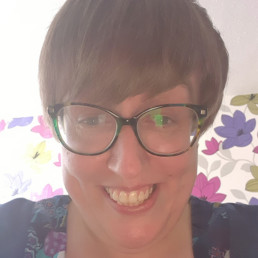
Written by Olivia Edmonds
Learning Resources Manager (with responsibility for the Library) at FE Level in Birmingham. Former Secondary English teacher of 10 years.
On my first day as a Learning Resources Manager at a Sixth Form College in the Midlands, the then Principal said to me, “Olivia, our students don’t read – and they need to. You need to get our students to read.” This was a challenge I was more than happy to accept, but looking at the wider context of the College, this turned out to be a bigger battle than I first expected. The College is situated in one of the most deprived areas in the country and serves a predominantly ethnic minority community, where many students use English as a Second Language. With limited opportunities to develop their cultural capital and without access to community Libraries (due to Government cuts), it made me realise the importance of the Library I was now in charge of, as well as the impact that it could have on the lives of its students.
My first focus was to make our stock as relevant and engaging for our students as possible. This also presented its own unique challenges. The stock I inherited from the previous Librarian was completely out of date and based on my experience at my first school (which had a similar cultural and religious demographic), not fit for purpose. To me, the importance of representation in books is key to engaging young people in reading, so when the Library shelves contained the works of authors such as Geoffrey Archer and Barbara Cartland, it was easy to see why the Library usage was so low. Couple that with the severe lack of books representing any of the protected characteristics of the Equality Act 2010, and it was clear to see the areas that needed addressing. I wanted the Library space to be a supportive, inclusive and engaging learning environment. A place in which our students could, in a safe space, learn about and ask questions about things they may have never discussed before and for this to happen, major changes were needed.
Working alongside the College’s Equality and Diversity co-ordinator, as well as a focus group of students and other staff, we worked together to assess what of the current stock was fit for purpose, what stock was unfit for purpose, and what stock could be fit for purpose if appropriately updated. It was the findings of this exercise that I was then able to take to my Line Manager and then onto SLT, who approved the decision for me to fully replace all of our fiction/Reading for Pleasure books with more appropriate, relevant, and engaging stock. This up-front investment in stock has meant that any additional or recently published stock has only needed to be purchased in small amounts to reflect the changing times in which we live.
When choosing new stock, I wanted to ensure that the variety of Own Voices stories was as wide as possible. I felt it was not only important for students to have access to stories relating to issues they have not come across before – such as different religions, sexualities, and cultures – as it was to have access to stories where they have some familiarity. Overall, my main aim in choosing new stock was for our students to be able to see themselves in the texts we have. With continued support from our students, as well as guidance from staff at Peters Books, Browns Books for Schools and our local Waterstones, we were able to create a collection that provided a solid base for us to build on as years passed. This collection has now allowed us to build our students’ engagement with a range of topics, including national and international events and cultural movements (thus improving their cultural capital), and has resulted in increased student loans, in depth liaison with teachers to provide further links between fiction and the Curriculum, and hosting a series of speaker events, ranging from authors to representatives from different religious backgrounds.
I feel that there will never be an end point when it comes to diversifying a Library collection, especially when it comes to Fiction. We live in an ever-changing society, where every day there are new issues raised and new opinions formed. Furthermore, the access to on the spot news being almost instantaneous means we, as Librarians, need to be aware of what our students are consuming and facing. If we can truly allow them to learn and be educated about a wide range of diverse matters in a safe environment, such as our libraries, then we have more chance of our young people being the true change that our world really needs.
Disability Awareness in Secondary PSHE
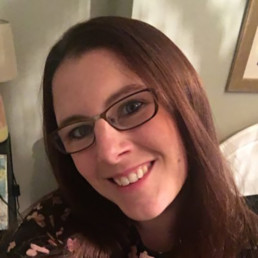
Written by Sophie McPhee
PSHE Coordinator in a West Midlands grammar school and Programme Director for the national Year 12 health and wellbeing enrichment programme Change Your Mind.
As committed life-long learners (I hope!), we sometimes get those ‘Oh wow!’ moments where suddenly, our eyes have been opened to a concept we’ve never considered before, and may even be obvious once we’re aware of it, but now we see part of the world in a completely new light. This is exactly what happened during a workshop Liz Wright (http://www.elizabethwright.net/) delivered at my school for our annual Mental Health Week in 2020, where she introduced to me and my students the social model of disability. Up to that point, the closest I had come to really thinking about disability in my 36 years was as a child, when my mum said she didn’t like a particular word beginning with ‘s’ commonly used as an insult when I was growing up in the 90s, because it was derived from the accepted term for people like her sister, who had cerebral palsy.
I feel ashamed to admit that I had to actually be taught to view disability as something created by society and not someone’s physical or mental difference – I had never even given disability the space in my brain for that thought to emerge independently. However despite my shame, it was a blessing, too, as it led to the firm decision during that workshop that disability awareness was not going to be a one-off session for an event week, but become a firm fixture in our PSHE curriculum. I will honestly say that I had never even considered doing this before – but isn’t that the point? If something is not within our lived experience – and I use that term broadly, to include having close contacts who are disabled – then the problem is not that we consciously think it doesn’t matter, but that it doesn’t even enter our head in the first place. I guess that this is a kind of unconscious bias – we only grant an issue more than a fleeting awareness if it relates to us in some way.
To be honest, I was also a little scared of covering this topic in my lessons, even if I did firmly feel that like me, my pupils should be woken up to – and the use of ‘woke’ is not accidental here, nor is it a pejorative – how they can be an ally to people with disabilities. There is absolutely such a thing as ‘non-disabled fragility’ (albeit not as catchy as the ‘white’ equivalent), whereby those of us without disabilities are so scared of getting it wrong, or speaking for or over those with lived experience. I am careful to point out in all my lessons that as a socially privileged woman, I am passing on what I have learned, but am by no means done with that learning. I made sure that once I had finished creating my lesson, I sent it to Liz and she kindly checked it over, patiently and gently pointing out a couple of places where I had used ableist language. It was a model of what educating others should look like – non-judgmentally uncovering and explaining problematic language which could have otherwise embedded problematic thinking.
I have now delivered this lesson to classes in Y9-11, some as live lessons, others as a pre-recorded version followed-up by a post-learning quiz. It appears that it has been successful, gaining an average rating of 4.4 out of 5 from students, most of whom said that they intend to change their language as a result of this lesson, both when referring to and talking to disabled people, and now know that common insult words are often derived from terms used in the past to refer to disability. Very often, pupils judge their lessons on whether they need to know the content for an exam or future career, but in PSHE, it’s not always about that, it’s about what others need them to know. We need, through these and other lessons which explore the vast range of human experience, to help pupils understand that creating a more inclusive and just society does relate to them. It might not do so always in a tangible sense, yet it weaves its way into not only our institutions, systems and processes, but also the quotidian, such as our face-to-face and social media interactions. Additionally, I would argue that there is most certainly a personal benefit to this kind of learning. It is incredibly enriching to understand better those whose experiences of life are different to yours. However, our pupils will only appreciate that benefit if they can first move away from viewing the purpose of education as leading to their future in purely material terms. And that is something all schools have in their power to influence.
You can access the disability awareness lesson at theother16hours.wordpress.com.
Empowering Change Through Education
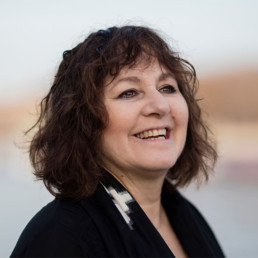
Written by Leslee Udwin
Activist, filmmaker, UN Women for Peace awardee, and Founder and Executive Chair of Think Equal, a global non-profit.
‘No one is born hating another person because of the colour of his skin, or his background, or his religion. People must learn to hate, and if they can learn to hate, they can be taught to love, for love comes more naturally to the human heart than its opposite’. Nelson Mandela
There is a profound chasm in our global education system – a missing dimension. How can we teach our children numeracy and literacy, yet not how to become loving, inclusive and empathetic human beings? In fact, even the most superficial glimpse of the values which bombard our children’s senses evidences a reality that needs to be effortfully countered if we are to disrupt the pretty archaic views of stereotypes which abound. Discrimination is the rule and at Think Equal we are determined to make it the exception.
So how do we educate inclusion, self-esteem (for all) and celebration of diversity? In fact, it’s so simple that if we continue to ignore it and neglect to implement the programmatic tools that exist, we should hang our heads in shame.
It’s not rocket science, it’s neuroscience. We work with our children as partners to co-create pro- social neuropathways in their developing brains. This is why our programmes work exclusively with children aged 3-6. Quite simply put, this is when the brain is ripe with neuroplasticity. By focusing on this specific age group, we can co-create pro-social behaviours with the child, and empower long-term change.
Embedding Social and Emotional Learning competencies and skills at an early enough age to be of material foundational value, is the key to unlocking the power of human kindness, inclusion, and connection, which is all too relentlessly overshadowed by divisiveness, sexism, racism, and deeply embedded bigotries.
We are all aware of the issues that are plaguing society, and now is the time to act on this awareness by implementing social and emotional learning programmes, such as that which Think Equal has designed for both classrooms and homes, at a global scale.
Think Equal has developed an innovative early years SEL programme which tackles the root cause of discrimination and violence from the outset. With input from world education and though leaders, such as Sir Ken Robinson, the Dalai Lama and the Yale Centre for Emotional Intelligence, we have designed an evidence-based, scalable, and replicable SEL programme. Think Equal’s mission is to actively transform the fabric of society through this curriculum: from a world that is apathetic, to one that is empathetic, from a society of passive living, to one of active empowerment.
We have created a comprehensive set of children’s books, one for every week of the Think Equal curriculum, accompanied by step-by-step teaching plans. We set clear outcomes for each week of the Think Equal programme. These include showing responsibility towards our planet and acknowledging the interconnectedness of all living creatures. We actively draw from the UN’s Sustainable Development Goals to expand the breadth of existing social and emotional learning programmes.
To celebrate International Women’s Day, I had the privilege of speaking with Hannah and Isa about how my work and Think Equal’s disrupts and challenges the patriarchy. One week later, the UN’s statistic, citing that 97% of women aged 18-24 in the UK had been sexually harassed, went viral. This study, drawn from the UN Women UK’s Safe Spaces Now project, resurfaced in light of the tragic disappearance of Sarah Everard. Claire Barnett, executive director of women UK, writes that ‘This is a human rights crisis. It’s not enough for us to keep saying ‘this is too difficult a problem for us to solve’ – it needs addressing now”.
This is precisely what Think Equal’s social and emotional learning programme does: starting at an early age, we anchor values of gender equality and respect in children’s mindsets. Think Equal urges you to recognize the genuine power that bringing teachers together can have in catalysing change. Teachers are the backbone of our society. It is by providing them with the training and distribution of Think Equal materials that we can really start to make a difference on our own doorstep, and as global citizens.
If you missed our chat on International Women’s Day, you can learn more about how Think Equal is leading the change in our global education system by registering for our webinar.
Now, this change can also happen with the help of parents across the globe. At the start of the Covid-19 pandemic, Think Equal worked hard to reach families in their homes. You can now order our free SEL home kits online.
Finally, you can help us catalyse this change by donating to Think Equal today. A donation of just 2 pounds will provide a child with the positive life outcomes to make a real difference in society.
Why taking part in School Diversity Week can help LGBT+ young people struggling with mental health
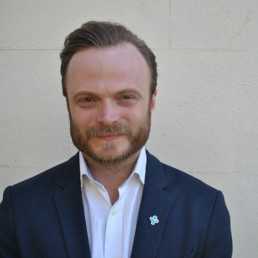
Written by Dominic Arnall
Chief Executive of Just Like Us, the LGBT+ young people's charity.
The pandemic has hit us all hard – whether it’s through job losses, being furloughed, losing loved ones, loneliness or our lives simply turning upside down. However, new independent research by Just Like Us has found that young people who are LGBT+ (lesbian, gay, bisexual or trans) are struggling significantly more.
LGBT+ young people are twice as likely to feel lonely and more than twice as likely to be worrying daily about the state of their mental health.
On top of this, one in four (25%) are facing daily tensions in the place they’re living and seven in 10 (68%) said their mental health has worsened during the pandemic, compared to just half (49%) of young people who aren’t LGBT+.
Sadly, Just Like Us’ independent research found what we suspected to be true when the pandemic began – LGBT+ young people are facing far more challenges than their peers and this is having a devastating impact on their mental health. And we found that LGBT+ young people who are also Black, disabled and/or eligible for free school meals face even worse mental health.
While we’ve all had a tough time not being able to see our loved ones and socialise like we used to, many LGBT+ young people are having to cope with living with families who may not accept or understand them, while also being cut off from their usual support networks or safe spaces where they won’t be judged for who they are.
School, while it may have been virtual for much of the pandemic, can be a fantastic source of support for young people. Sadly, for pupils who are LGBT+, school still often isn’t a place they are able to feel safe, welcome or happy being themselves.
Our research shows that half (48%) of 11 to 18 year olds say they have received little to zero positive messaging at school about being LGBT+ in the last 12 months. One in five (18%) young people say they have received no positive messaging from their school about being LGBT+, which suggests that a significant number of schools are not taking action to meet Ofsted requirements of preventing homophobic, biphobic and transphobic bullying.
It’s a real shame to see that Section 28 is still having such an impact on LGBT+ young people’s experiences of school. As adults, we could be forgiven for thinking that things have moved on – after all, we have far more legislation to protect us these days – but education still has a long way to go in being LGBT+ inclusive.
No child should feel scared to be themselves at school. And pupils in primary schools should know that there’s no shame in having LGBT+ parents or families either. Growing up bisexual, if I’d known and could’ve seen that my school accepted me, my journey would’ve looked very different.
We know that teachers and school staff are doing an incredible job in an overwhelmingly challenging environment. That’s why we are doing everything we can at Just Like Us to make taking the first step to LGBT+ inclusion in education as easy and accessible as possible.
This summer is School Diversity Week. We’re asking all primary schools, secondary schools and colleges to please sign up to take part. It’s free, you’ll get a toolkit of teaching resources for all key stages, across the curriculum, and celebrating means your pupils will know they can be safe, happy and accepted at your school.
We’ll be running free online masterclasses that you can stream, there’ll be Rainbow Friday where pupils can dress up as a colour from the Pride Progress flag, and we have many new resources for staff to inspire your celebrations. LGBT+ young people are facing disproportionate mental health challenges and need to know who they are is not something to be ashamed of – please sign up for School Diversity Week and celebrate with us and thousands of schools and colleges taking part 21-25 June.
Meghan and Harry show young people how to speak their truth and the rest of us that we need to listen with compassion
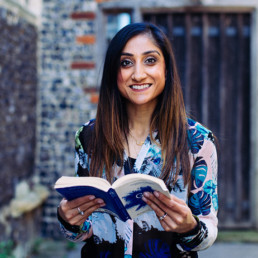
Written by Zahara Chowdhury
Zahara is founder and editor of the blog and podcast, School Should Be, a platform that explores a range of topics helping students, teachers and parents on how to ‘adult well’, together. She is a DEI lead across 2 secondary schools and advises schools on how to create positive and progressive cultures for staff and students. Zahara is a previous Head of English, Associate Senior Leader and Education and Wellbeing Consultant.
In years to come, I’m pretty sure Oprah’s interview with Meghan and Harry will feature on the curriculum in some way: history lessons on the monarchy; English lessons on the impact of digital media; Psychology lessons on trauma; PSHE lessons on familial relationships. At the moment, especially in light of Piers Morgan’s resignation from Good Morning Britain, ‘freedom of speech’ is again up for debate, probably the biggest debate on the matter since Trump was removed from Facebook and Twitter. It’s uncomfortable, yes. But, I see it as an opportunity. It’s an opportunity to positively engage with the Teacher’s Professional Standard regarding the expression of personal beliefs. By speaking their truth, their lived experience, Meghan and Harry have shown young people that we can have personal, uncomfortable conversations around race, equity and the status quo with grace and integrity. And, if I was still in the classroom, I would see it as the best environment to teach young people how to have these personal discussions with dignity, compassion and empathy.
After watching the interview a few Mondays ago, I went to bed thinking, how brave and how graceful. I had listened with compassion, empathy and welcomed what seems to be a turning point in the expression of lived experiences and truth. Tuesday morning, I turned on the news, and it felt like I’d watched a completely different version to the journalists before me. In many ways that’s a good thing, opinions differ and that’s how we learn. However, a rising and ongoing problem with social and digital media is a lack of knowledge around how to manage a discussion. I’d like to think the majority of people know how to frame an ethical, written response whether that be in the form of a tweet, comment or direct message. But the overwhelming rise of keyboard warriors, online bullying and trolling is doing more to polarise our society than unite. What’s worse is that students are surrounded by it 24/7 on their phones, iPads and on the TV – more often than not without context or an understanding of how to think about it. Unfortunately, Facebook and Twitter have yet to introduce some form of workable regulation to prevent the rise of anxiety, fear and mental health (we all know they can do more and should do more). Until they do, I think school and the classroom are the best place to nurture an environment where students can have these open, uncomfortable conversations in a safe and equitable environment.
How do we do this? How can teachers have uncomfortable conversations around race, equity and truth in the classroom?
Looking back on my time as a South Asian, Muslim, female head of department, leader, teacher, manager, mother, daughter, sister, I always shared my identity in an honest way, to give my students perspective and context. I shared stories and my viewpoints framed by who I am and my lived experience. This then gave my students the confidence, the model to share their own truth. Modelling is key here, and dissecting Meghan’s approach (ever an English teacher!) to sharing her truth is a lesson in how to share your truth with context, integrity and reason.
Managing those stories and lived experiences is a challenging and scary responsibility for a teacher. The amount of times I ended a lesson, heart racing, from the classroom worried about a parent calling, a colleague challenging my approach on discussion is insurmountable! Equally, I walked away fulfilled. I’d created a safe space that gave students the confidence to share, challenge, agree and disagree with one another. Did it always end well? No, of course not! But it always, eventually ended with respect. That doesn’t happen on Facebook, and I’m not sure it can. If we integrate compassion, listening and equity into our school ethos and classroom culture – just like Oprah! – we can absolutely have moral, ethical and difficult conversations around race, status and the world to make learning that little bit more purposeful.
What is there to discuss?
Meghan and Harry made it abundantly clear on the differences between the institution and the family, and I came away from the interview thinking how multifaceted the dynamics of the Royal Family are – as a job and as a family member. This is a discussion I would love to have in the classroom.
The differences in British and American culture shined through Meghan and Harry. Meghan quite rightly spoke about the change in environment, politics, her identity as a career woman almost changed over time. Harry said meeting Meghan helped him realise he was trapped in a system. Discussing these issues with compassion and empathy can teach young people so much more about ‘real life’ than any careers lesson.
Is it ok for a white man to so out rightly defame a woman of colour? Or maybe people in class don’t think he was defaming at all? What is there to learn and unlearn here? Use the works of Rachel Cargle, Dr Shona and even Edward Said to start a conversation.
With all of these topics, it’s important to teach students that we are all entitled to an opinion, but not one of hate and plain nastiness. The presence of compassion in discussion is quite possibly what marks a successful and valuable conversation.
Will we, as professionals, make mistakes? Of course! Will we come across barriers at school? Absolutely. Should that silence or limit the space for these conversations? No. If the dynamics between digital media, TV, the Royal family and Meghan and Harry’s transparent honesty have taught us anything, it’s that we need to share our lived experiences. More importantly, we need to work together to create a global community that enables them. And, I think the classroom is the best place to start.
How Can We Create a Curriculum that is Inclusive of Queer Theory?

Written by George Hayward
(he/him), English Teacher in East London, LGBTQ+ Advocate.
During my time as a student, I often felt a lack of inclusivity in the curriculum I was studying. Reading great classics and beloved page turners such as To Kill A Mockingbird and Lord of the Flies, I found myself wondering why none of these stories were about people like me. When I reached university, I discovered Queer Theory and I was mindblown. Not only were there stories about people like me, but there were academics studying and rereading the texts I grew up with and held dear through a lens of queer understanding. One such text was Robert Louis Stevenson’s The Strange Case of Dr Jekyll and Mr Hyde. I had the opportunity to study these readings during my time at university, so when the opportunity arose to deliver a lecture on it at my school in East London, I was overjoyed. While planning the session, I drew upon the essays and research I had from my undergraduate degree, revisiting the work of prominent theorists such as Elaine Showalter, Judith Butler, Eve Sedgwick and Michel Focault. The most extensive in relation to Jekyll and Hyde being Showalter’s paper Dr Jekyll’s closet.
Queer Theory aims in principle to challenge heteronormativity: the assumption that heterosexuality is the default state of being. It digs into the structures of understanding within art, literature and society and dismantles them. This is an important area of theory as it provides visibility. It allows students of all backgrounds and identities to see themselves in the curriculum they study. It shows them that they are seen and that different people exist. There is a lot of talk about ‘acceptance’ of LGBTQ+ peoples and while acceptance is a great first step, what we need is celebration and understanding. The teaching of Queer Theory and narratives provides this understanding and promotes the celebration of all our students and their identities. It promotes a culture of inclusive allyship and support, where students, staff and their families from all walks of life can lift each other up and be their true authentic selves. All our students deserve to feel they are lifted up in a space where they are safe and important.
The session was received well by staff and students alike. I was able to offer the session twice, firstly to the staff of the English department and secondly to our year 10 students. Staff were engaged with the topic and felt that Queer Theory provides another framework of understanding to utilise in our classrooms. It provides another tool in our analysis toolbox to dig deep into language and encourage our students to be critical thinkers. Similarly, students in my year 10 class that attended the session found the subject refreshing and interesting. I found that while Queer Theory and readings may seem oblique to some, students and staff alike were able to engage with the topic and take away some food for thought. The opportunity to deliver the session was incredibly fulfilling for me on a personal level and it is my true belief that the teaching of these theoretical frameworks is of benefit to every student. I believe it is crucial to foster this culture of inclusivity and celebration for all our learners and I hope that Queer Theory will be a valuable step on this journey.
An African Teacher’s Experience of a British Classroom
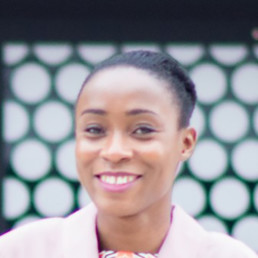
Written by Chinwe Njoku
Qualified teaching professional with a background in Engineering. I have written three books related to the education space (Good Morning Year 11, Raising an ‘A’ Student and From Diapers to Doctorate Dollar-Free).
Try teaching as an African teacher in a non-African country to a mix of students from various backgrounds as different as the colours of a chameleon! This is true hard work! All your paradigms of how children should (not) behave are upended and challenged. Sometimes completely obliterated, you wonder why you lived by those beliefs in the first place. Either culture clash or languages blended.
For example, a student from one of the most popular Asian countries that can also be ‘black’, joins in about halfway through the year and it soon became clear that she and her family must have recently migrated to the UK.
Because, at the start of the next lesson, she walked over to my desk where I was sat and greeted me, “Good morning, Teacher”.
I did not know how to respond as it took me by surprise. Without making eye contact, I just said, “You don’t need to greet me like that every lesson”. I felt embarrassed. Thank God I’m brown skinned or I would have turned red.
Next lesson, I made sure I was at the door welcoming students in to avoid the intense attention of being called Teacher, which I am but dang, just call me “Miss” or “Dr Njoku” like the others.
Second example. A fellow African student was revising after school for her upcoming exams in my classroom, with her friends. But they were chatting quite a bit with this girl being the loudest, most animated and more loquacious of all.
I called her by her last name with the tone of, you need to stop talking and getting on work, or you shall hear from me in a not so fun way! And child, your parents would not be happy either!
Calling children by their last names or first and last names is an African thing. To remind the child of whose they were, and not to bring disgrace to their ancestors and everyone on their family tree?
In response to hearing her last name, she said “Yes, Ma!” And this was not the first time African students have responded to me this way. I have even had, “Yes, Aunty!”, “Yes, mummy!”
Her friends responded with audible arghs, expecting me to caution her against saying that. She quickly caught herself, recanting that she was just used to saying it. I simply raised my eyebrows, shook my head and carried on doing what teachers do after school.
Her default response which caught her off guard, got her to be quiet, but only for a while as nature sometimes trumps nurture.
Last example. One Maths topic I teach KS3 students is Introduction to Data, including the different classifications of data that there are. Data can be classified as either Continuous or Discrete, or as Qualitative or Quantitative. To help students distinguish between the later, I typically go through different contextual examples getting them to decide which class the data type belonged to.
Now because Qualitative and Quantitative sound alike, it was difficult to know which one was being said as an answer. I tried enunciating it for my students so that they could emphasize the ‘li’ and ‘nti’. But try as I may, it seemed not to be working.
Ideally, they would each have mini whiteboards so that they could just show me their answers, saving me the tongue twisting/biting! But not this time for some reason.
Eventually, my tongue could take it no more. Repeatedly asking them to repeat themselves and make a clearer distinction in their pronunciation, I blurted out, “Qua-gini?”
Gini, in my native tongue, Igbo, means ‘what’. By the time I realised I had spoken a different language in an English-based Maths lesson in a British school, it was too late. I could not take back my words.
My students who looked at me confused. But since no one else knew what just happened, I kept a poker face, swiftly correcting it to, “Qua-what?”
All was calm. Teaching and learning resumed. Except in my mind, of course, as I tried not to laugh at my blunder.
Then it happened again in a different lesson. I was in the throes of solving one question after the other on the board and taking requests from the audience – my Year 11 students. Then, someone called out, “Question 36, Miss!”
To gain time to figure out the solution to the problem, I responded as I walked to the board, “Thirty-gini?”
From the eyes at the back of my head that all teachers have, I could ‘see’ the two students who had Igbo heritage chuckling to themselves in mutual knowing of what they just heard.
Somebody, help!

